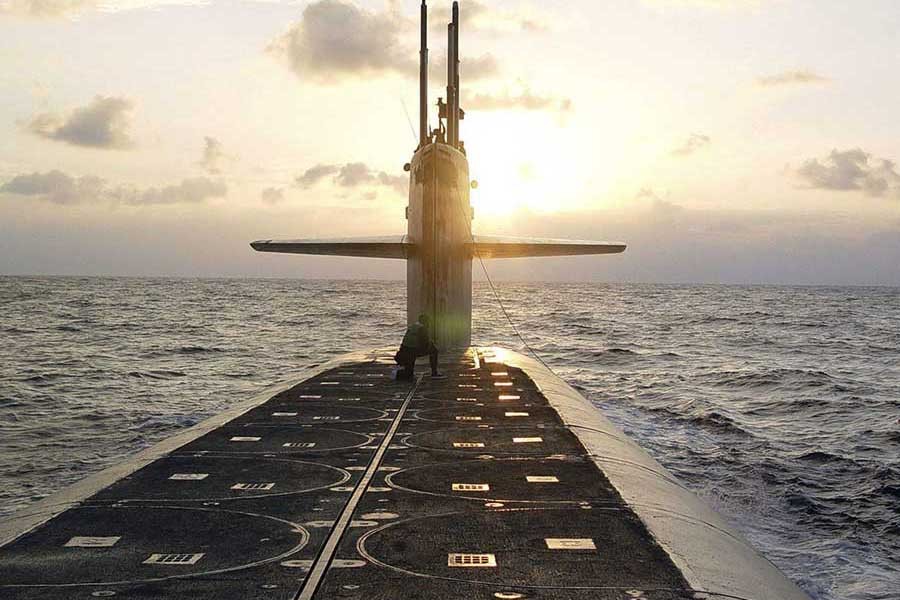
Published :
Updated :

The U.S. military has deployed a new addition to its nuclear arsenal - a long-range missile armed with a nuclear warhead of reduced destructive power, reports AP.
The so-called low-yield missile joins other, more powerful weapons aboard stealthy submarines prowling the oceans.
The debut deployment aboard long-range submarines, known as boomers, is a landmark in U.S. nuclear weapons policy.
It is the first major addition to the strategic nuclear arsenal in recent decades and is a departure from the Obama administration's policy of lessening dependence on nuclear weapons in pursuit of a nuclear-free world.
In confirming the missile deployment to The Associated Press, the Pentagon's top policy official asserted that the weapon makes Americans safer by making nuclear war less likely. Critics, including some Democrats in Congress, call it a dangerous excess that increases the risk of war.
John Rood, the undersecretary of defense for policy, said in an AP interview Monday that adding the "low-yield" warhead, known as the W76-2, to submarines which tote Trident II ballistic missiles lowers the risk of nuclear war.
He said the United States will continue its stated policy of using nuclear weapons only in "extraordinary circumstances." He also said the warhead will help the United States dissuade Russia from risking launching a limited nuclear conflict.
"This supplemental capability strengthens deterrence and provides the United States a prompt, more survivable low-yield strategic weapon," Rood said, adding that it supports the U.S. commitment to deter attacks against allies, and "demonstrates to potential adversaries that there is no advantage to limited nuclear employment because the United States can credibly and decisively respond to any threat scenario."
Rood declined to provide details about the deployment, including when or where the deployment began; all details, he said, are classified secret.
The deployment was reported last week by the Federation of American Scientists, citing anonymous sources and reporting that it was believed to have begun in the final weeks of 2019 with an Atlantic deployment of the USS Tennessee.
Adding the W76-2 fits President Donald Trump's stated interest in beefing up the nuclear arsenal, although he has not commented on this specific weapon. His administration is committed to a broader, costly modernization of the nuclear force.
The essence of critics' argument against the low-yield weapon is that it makes the world less safe because it offers decision-makers another option for using a nuclear weapon in a conflict that could then escalate to a full-blown nuclear war.
They also contend that lower-yield air-launched nuclear weapons already in the U.S. arsenal make the W76-2 redundant.
Rood, however, said the submarine-launched low-yield missile is important because it can more reliably penetrate air defenses than could an airplane armed with nuclear weapons.
The W76-2 is the Trump administration's answer to what it calls a Russian misconception of an exploitable "gap" in U.S. nuclear capabilities.
By deploying missiles at sea with a lower nuclear yield, or destructive power, the administration aims to dissuade Moscow from thinking it could "win" a war in Europe, for example, by firing its own low-yield nuclear weapon first, forcing Washington and its NATO allies to either commit to full-scale nuclear war or capitulate.


 For all latest news, follow The Financial Express Google News channel.
For all latest news, follow The Financial Express Google News channel.